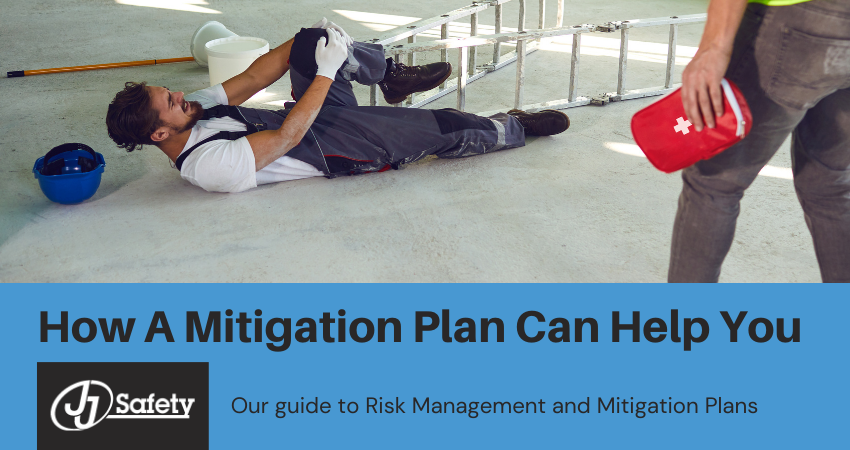A Mitigation Plan is a tool used in the prevention of workplace injuries. It is helpful in the identification of areas of improvement and documents the appropriate correction and mitigation of those areas. What defines a “risk”, you may ask? A risk can be defined as an event or condition that could have a positive or negative effect on a project’s objectives if it occurs. For example, a risk in a construction environment is most associated with the health and safety of workers.
There are two main types/tiers of risk: Critical risks, which if realized would have a high impact on objectives, and non-critical or general risks, which if realized would have a lesser effect on an objective. It is important to note that mitigating critical risks may create some non-critical risks, and vice versa.
Here at JJ Safety, we conduct a Qualitative Risk Analysis to categorize risks into three Risk Categories:
High – A high level risk has a greater probability of occurrence by 70%.
Medium – Medium level risks run the probability of occurrence anywhere from 30-70%.
Low – Low level risk has a probability of occurrence below 30%
Each risk has the potential to impact a project’s cost, schedule, or performance. High risks have greater impact, medium risks have a lesser impact, and low risk have relatively little impact. Regardless of risk level, each must be mitigated.
With our Mitigation Plan all risks are identified and assessed to project the range of possible outcomes.
We consider elements such as environmental factors, organizational culture, and project scopes.
A Qualitative Risk Analysis is then used to prioritize top risks. The factors used will vary between organizations and projects. Some commonly used factors are: likelihood, impact, project criticality, and control.
While risk matrices are an effective way to analyze risk across projects it is common for factors to be customized per organization/project. Then, once prioritized the risks are rated numerically on a risk management plan. For each major risk, the following approaches will be selected to address it:
- Avoid – Eliminate the threat or risk by simply eliminating the cause.
- Mitigate – Identify ways to reduce the probability or the impact of the risk.
- Accept – Nothing will be done; no changes will be made.
- Transfer – Shift risk to a 3rd party. (Insurance or Outsourcing)
However, for each risk addressed in the mitigation plan, the project team will identify ways to prevent the risk from occurring or reduce its impact or probability of occurring. This can be done through prototyping, adding resources, or training employees on the hazards associated with said risk. In addition to this, each risk assessed requires a course of action to take in the event that the risk does materialize. The course of action is key in minimizing the impact of the risk.
It’s crucial to reassess each risk throughout the project lifecycle. This can be done when discussing the project with stakeholders, confirming that appropriate responses are in place and working, and revising plans when necessary. All project changes will be analyzed for new and existing risks. This will allow you to keep your mitigation efforts up-to-date and relevant; we don’t want to spend time mitigating a risk that doesn’t apply.
Finally, the risk management process should be fully documented to demonstrate how risks are mitigated throughout the life of the project. Start your Risk Management and Mitigation Plan today with JJ Safety LLC.
